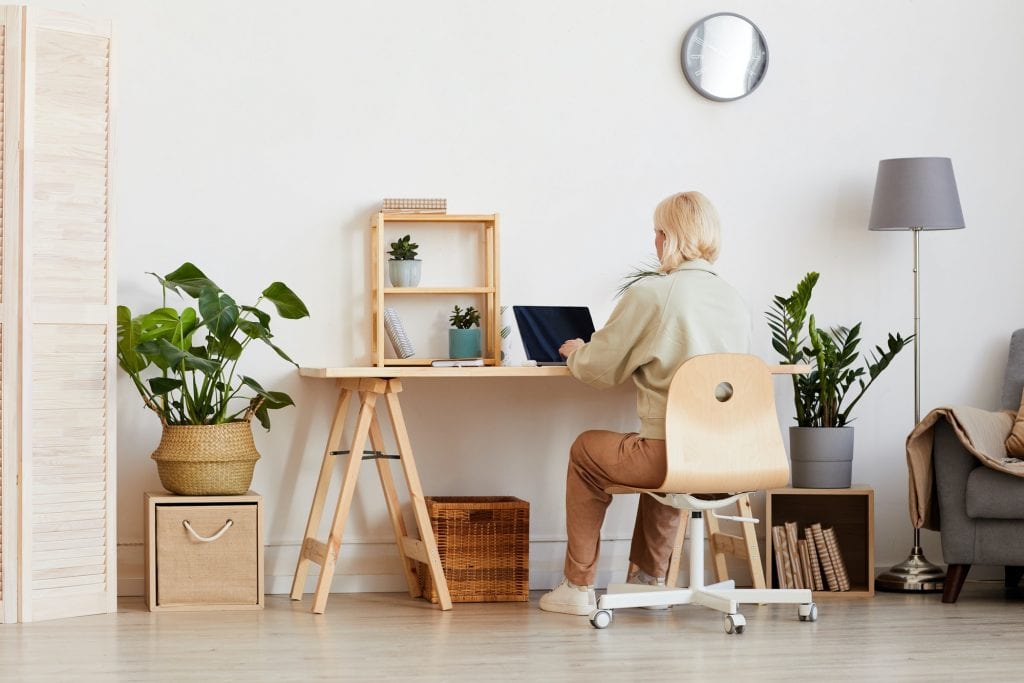Firstly, we would like to send out our warmest wishes to you all in this testing time. If there is any way our team can help you, please get in contact.
We have a really broad network in Australia, so can connect you with just about anything you need to keep your family/ business going in this tough time.
At our daily Zoom meeting the other morning we came up with our top tips from the team when working from home, here they are:
- Set your alarm for the same time each day – no snooze buttons allowed!
- Shower and get dressed like you would going to the office – PJ bottoms the exception!
- Go for a morning walk to invigorate the mind.
- Ensure you have a dedicated workspace.
- Mind dump by making a clear to-do list.
- No lunches at the desk. Get some fresh air and eat outside instead!
- Schedule small breaks away from your computer screen and/or desk throughout your working day.
The majority of us who are able to work remotely, are now working from home due to the worldwide Coronavirus pandemic. This means your tax deductions this year will look a little different this 2020 tax year!
It’s important to know what expenses you should be recording so you can claim back these costs through your taxes when you complete your 2020 tax return come June 30.
Tip #1. Home office running expenses
You can claim your work-related proportion of your home running expenses such as the cost of using your lighting and heating as well as the use of your home office equipment. A list of other home office expenses includes:
- Gas & Electricity
- Cleaning costs
- The decline in value of equipment, furniture and furnishings used for work purposes within your home office.
- Costs for repairs and maintenance of your home office equipment, furniture and furnishings
- Other running expenses such as stationery and computer consumables
There are two methods to claim your running expenses, the fixed rate of 52 cents per hour method or the actual expenses method
A. Fixed-Rate Method
- The fixed-rate method allows you to claim your overall running costs using a set rate per hour as opposed to recording all your actual expenses for heating, cooling, lighting, cleaning and decline in value of the furniture.
- To do so, you are not required to keep records of all these expenses separately.
- You are required however to keep a diary record of the actual hours you spent working from home for a minimum of 4 weeks. The amount is then multiplied by the total working weeks for the year and is applied by 52 cents to determine your total claimable tax deduction.
For example- Justin worked on average 15 hours per week from home, his total home office tax deduction is calculated by:
15 hours x 48 working weeks x .52 = $374.40 tax deduction
B. Actual Expenses Method
- The second method is claiming a deduction based on actual expenses. Firstly, the most important thing is you must have a dedicated home office to be eligible to claim actual expenses.
- Using this method, you must keep records of all your running expenses such as receipts or bank transactions for your gas and electricity.
- Once you have calculated your gross total home running expenses you will then need to calculate your home office floor area as a percentage of your total home floor area.
- Finally, you will need to maintain a diary record of the number of weeks you worked from your dedicated work-space at home. This will determine your claimable percentage of work-related usage.
- Once you have worked out all three steps, you can then claim a deduction for the net proportion which reflects your overall home office expense.
For example,
Justin lives alone and his gas and electricity bill for the 2020 financial year totalled $1,500. His dedicated home office floor area equals 20m² and his overall home floor area equals 200m². He worked from home for 6 months of the year. He calculates his total home office running costs using the following method:
(20m²/ 200m²)x 1,500 x (6/12) = $75 tax deduction
You will also have to calculate costs for the decline in value and costs for repairs and maintenance of your equipment, furniture and furnishings used for work purposes within your home office separately. We will be able to assist in calculating this cost for you!
Tip #2. Home occupancy expenses
In general, as an employee, you cannot claim a deduction for occupancy expenses which includes rent, property insurance, rates and taxes because we are provided with an office space at work which we have the ability to use. But due to the fact many of us are having to work from home due to self-isolation/social distancing purposes, we are eligible to claim a deduction for these costs.
To calculate your tax-deductible portion please follow the same steps as per the home office running expenses actual expense method.
Tip #3. Phone and internet expenses
Working from home there is a high chance that you are using your phone or internet for work related purposes and so you can claim a deduction for a portion of these expenses which are work related.
To claim the costs, you will need to keep records of your phone bills as supporting evidence which you can identify work related calls. you will also need to determine your percentage of work use over a four-week period to represent your usage which can then be applied to the full year.
Along with tax tips, if you missed our COVID-19 webinar on Wednesday please follow the link below where you can watch our associates at Rees Group and Discover Financial Partners take on the Australian Government’s $189 billion in stimulus packages, as well the current share market, investments and superannuation advice.
If you have any questions regarding the information above or want some more tax tips on how to increase your eligible tax deductions, get in touch with Ashley our customer service guru via email customercare@ezytaxback.com who will be able to lead you on the path to tax savings.



